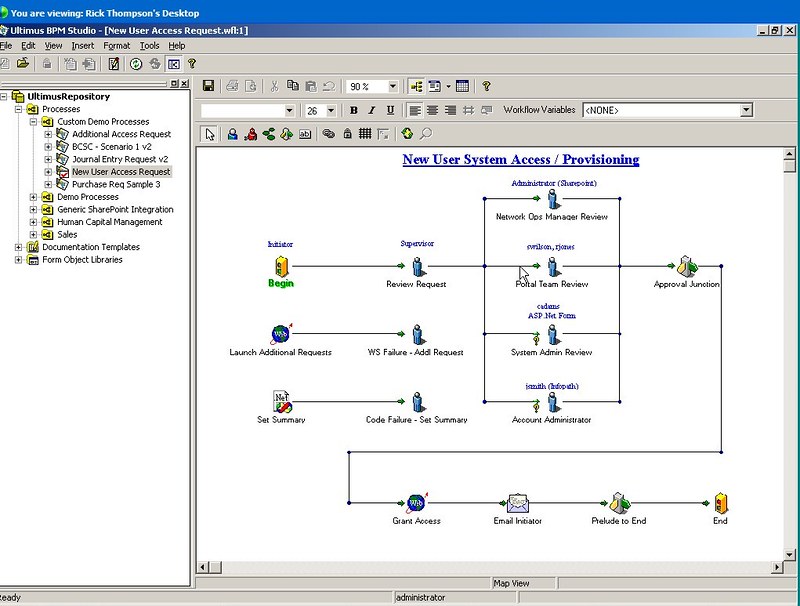 I ended up wrapped up in a discussion at the break that had me arrive late to the last session of the day; Steve Jones of Ultimus is going through many of the technical underpinnings of V8 for designers and developers, particularly those that are relevant to the people in the audience who will be upgrading from those old V7 systems soon.
I ended up wrapped up in a discussion at the break that had me arrive late to the last session of the day; Steve Jones of Ultimus is going through many of the technical underpinnings of V8 for designers and developers, particularly those that are relevant to the people in the audience who will be upgrading from those old V7 systems soon.
A nice way to integrate with web services, where the WSDL can be interrogated and a data structure matching the interface parameters created directly from that; most other systems that I’ve seen require that you define the process parameters explicitly then map from one to the other. Of course, there’s lots of cases when you don’t want a full representation of the web services interface, or you want to filter or combine parameters during interface, but this gives you the option for setting up a lot of web services really quickly.
The integrated rules editor allows you to drag and drop process variables — including recipients — onto a graphical decision tree; you don’t have the full power of a business rules system, but this may be enough for a lot of human-centric processes where most of the complex decisions in the process are made by people rather than the system.
For interfacing with any of the external components, such as the email connector or a form, it’s possible to drag and drop data fields from the process instance schema or org chart/ActiveDirectory directly to assign variables for that component, which is a pretty intuitive way to make the link between the data sources and the external calls. They’ve also eliminated some of the coding required for things like getting the current user’s supervisor’s email address, which used to require a bit of code in V7.
Ultimus provides a virtual machine with the software pre-installed as part of their training offerings, which is a great way to learn how to work with all of this; I don’t understand why more vendors don’t provide this to their customers.
I looked back to some old notes from early 2007 when I had a demo of Ultimus V7; my impression at that time is that it was very code-like, with very little functionality that was appropriate for business analysts; V8 looks like a significant improvement over this. They’re still behind the curve relative to many of their competitors, but that’s not completely surprising considering their management upheavals over the past year. If you’re a pure Microsoft shop, however, you’ll likely be willing to overlook some of those issues; Forrester placed Ultimus in the leaders sector (in an admittedly small field) in their report on human-centric BPM on Microsoft platforms. In the broader market of all BPM vendors, Gartner placed them in the visionaries quadrant: good completeness of vision, but not quite enough ability to execute to make it into the leaders quadrant, although this latter assessment seemed to be based on the performance of the previous management team.
Steve spent a bit of time showing the V8 end-user interface: reconfigurable columns in task lists, including queries and filters; shared views to allow a personal view to be shared with another user (and allow that other user to complete work on your behalf); and the ability to run reports directly out of the standard user environment, not a separate interface.
They’ve also done some performance improvements, such as moving completed process instances to a separate set of tables (or even archived out to another database) for historical reporting without impacting the performance of work in progress.
That’s it for me for the conference (and the week); tonight, we’ll be down by the Riverwalk drinking margaritas while listening to a Mariachi band. Tomorrow is an Ultimus partner day and I’ll be on an early morning flight home. Next week, I’ll be at the Business Rules Forum in Orlando, where I’m giving a presentation on mixing rules and process. The following week, I’m headed to Miami for the Software AG analyst/blogger roundtable and a day at their user conference, a late addition to my schedule.



